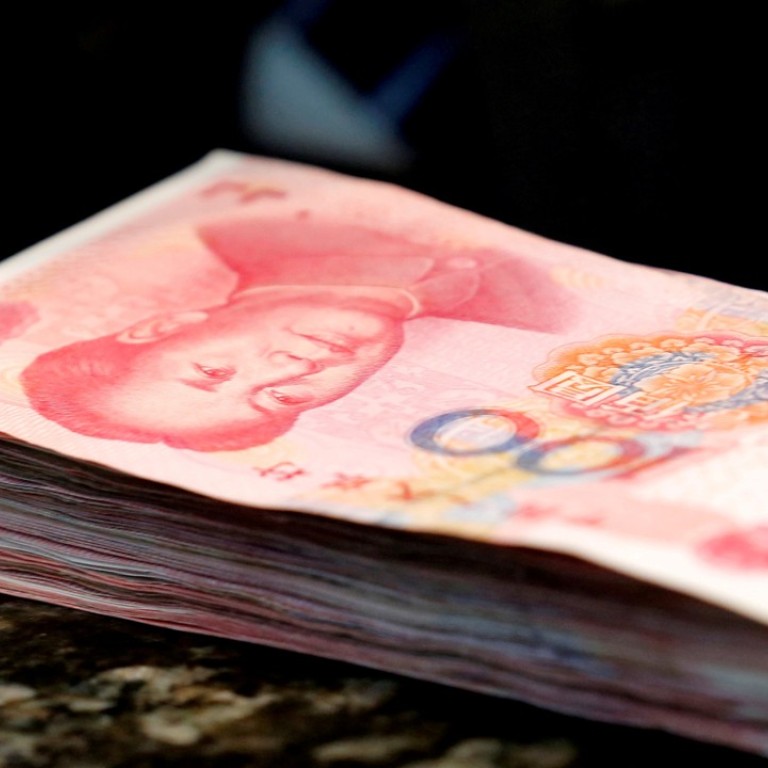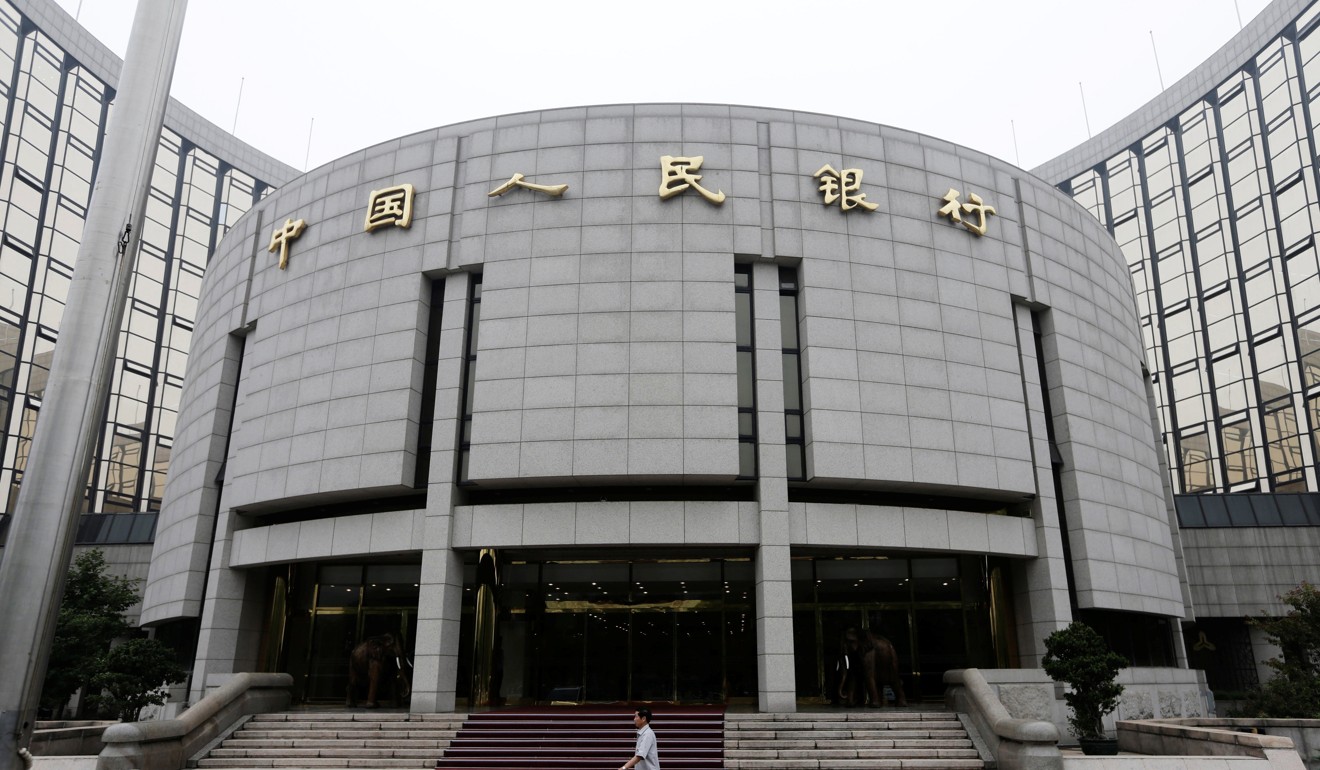
PBOC puts US$1.27 trillion of bank debt under closer scrutiny
As of July the value of outstanding NCDs had grown to 8.43 trillion yuan, 13.2 per cent of China’s total bond market
China’s central bank said it will start to closely examine 8.43 trillion yuan (US$1.27 trillion) of money market debt issued by big banks from next year.
The People’s Bank of China said in its second-quarter monetary report that from the first quarter of 2018, it will include negotiable certificates of deposit (NCDs) issued by banks with over 500 billion yuan of assets when it calculates their interbank liabilities under its macro-prudential assessment(MPA).
The move is part of efforts by Beijing to curb risk in the financial system by reining in rampant interbank funding.
But the PBOC is providing some leeway for smaller lenders, which have made the most of the debt instrument to amplify returns, and in doing so added to risk in the banking and bond systems. They will be exempt from the first round of the test, though the PBOC said it will continue to monitor them.

“The overall impact will likely be small, as the move is probably less severe than expected: there is enough time for adjustment, and medium and small banks, which rely on more NCDs and interbank liabilities, will be excluded from the first test,” said a Citibank note.
Other Chinese banks have made similar assessments. Tianfeng Securites said NCD yields will rise in the third quarter from current lows of 4.15 to 4.3 per cent, but the upward momentum will be weaker than in the April-June period.
China’s bond markets had already absorbed news of the NCDs’ inclusion as interbank liabilities. The issuance rate of NCDs soared in March, and jumped again in May, pushing the yield to a record high of almost 5 per cent, before plummeting again. But as rhetoric against financial leveraging eased and liquidity increased, volume picked up once more in June and July and the rate fell as low as 4 per cent.
The central bank introduced NCDs in December 2013 as a way to facilitate interest rate liberalisation, but the instrument was quickly discovered by smaller banks, who embarked on a debt binge. Facing difficulty attracting retail deposits, China’s smaller banks sold large volumes of NCDs, bolstering their liability in the wholesale fund market and using the proceeds to buy each other’s wealth-management products and NCDs, profiting from the spread between the two.
In May 2014 the central bank and the banking regulator capped interbank liabilities at no more than a third of a bank’s total liabilities, but NCDs, still in their infancy, were not counted as interbank liabilities. Banks were quick to take advantage of the loophole, and at their peak in 2015-16, NCDs accounted for over a half of total bond issuance.
“NCDs in China turned into something totally different from what they are the west. With an implicit guarantee from the government, Chinese banks are not afraid to take risk to the very limits. This is a typical regulatory arbitrage,” said Dai Zhifeng, chief banking analyst with Zhongtai Securities.
By the end of July, the value of outstanding NCDs had grown to 8.43 trillion yuan, making up 13.2 per cent of China’s total bond market, up from 1.7 per cent in 2014. But the rate of growth has cooled down this year: year-on-year growth of national joint-stock banks’ NCDs, the largest of its kind, tempered to 67.8 per cent in June, from 393 per cent a year ago, according to Wind Info.
Citi said with the inclusion of the instruments in the MPA in sight, some lenders may be forced to replace interbank funding with household deposits or other general liabilities. Some may even sell off their liquid assets if new funds are not available.
The greater risk may come from the buy side, some analysts said. The China Securities Regulatory Commission is mulling new rules to restrict money market funds from buying NCDs with a proposed new cap on NCD investment as a ratio of total assets, the Securities Times reported.
The largest banks may be little affected by measures to curb NCD invetment as they account for a relatively slim share of their total liabilities. But some national joint-stock banks and city commercial banks that have previously relied heavily on NCDs may find their liability under pressure.
For example, China Minsheng Bank, with assets well above the 500 billion yuan threshold, had an interbank liability to total liability ratio of 32.8 per cent (slightly below the one third cap) by the end of March. But had they counted, its 466.7 billion yuan of NCDs would push the ratio up to 39.3 per cent.
There are 14 big banks that would exceed the one third cap if NCDs were counted, including Huaxia, SPDB and Industrial Bank.

